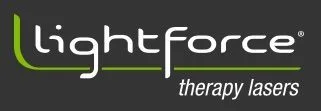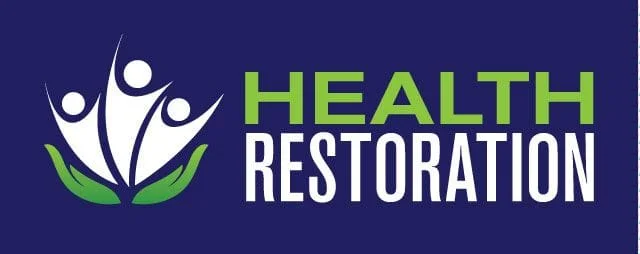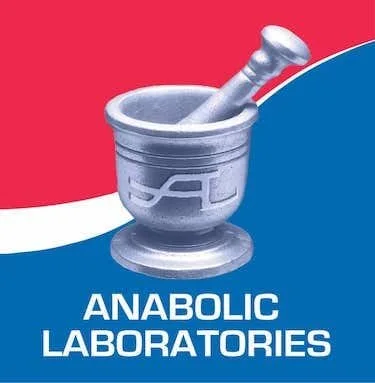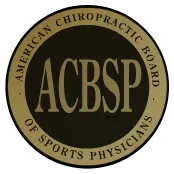Dr. Jeffrey Tucker
11620 Wilshire Blvd. #710
Los Angeles, CA 90025
310-444-9393
When the patient’s symptoms overwhelm me, I have a system I can count on. I use the acronym POLITE as a reminder of the things I may need to discuss, check or perform with my patient. The ‘P’ is Prevention, Plan, Posture, Proprioception. The ‘OL’ is Optimal Loading. The ‘I’ is Instrumentation, Ice. The ‘T’ is Taping, Technology. The ‘E’ is Education, Eating, Exercise, Ergonomics.
The majority of my practice is made up of patients with acute sports injuries and/or chronic pain. The chronic pain patients history usually reveals prior injuries, excess or prolonged sitting, poor postures, or repetitive movements over time that have led to movement inefficiency and dysfunction in natural movement patterns. Do these factors really relate to the current symptoms? I would say ‘yes’! It is known that previous injury in the same muscle does play a part in recurrent muscle
injury (McCall).
My examination involves movement screens but the screen depends on the patient and their complaints. Movement analysis can inform us about the patient’s movement system. The only way I know if movement patterns are compromised (from the short term presence of pain or fatigue, or thelonger term impact of muscle and joint restriction, chronic pain or the deficits left by previous injury) is to ask the patient to move. I observe if the patient can do what I ask – then I try to answer ‘Was there normal range of motion? Was there control of motion in the various planes (sagittal, frontal, transverse)?’ For example, when I ask a patient to perform a squat or a lunge, it’s no different than asking the patient a verbal question. I am questioning the patient’s pattern of movement under bodyweight load or with a load such as a band, free weight or kettlebell. I am looking for movement quality, synergies of muscle activation and co-ordination with other muscles. I am looking at proprioception (one of the P’s in POLITE). It’s about fluidity, balance, timing, symmetry or asymmetry of motion. This possess of asking the patient to perform a movement analysis (functional task) may provide greater insight as to why they were at risk to begin with.
Patients in pain, especially those with a history of an old injury often times don’t even realize that they have lost normal range of motion or a normal movement pattern. Others have obvious reduced ranged of motion or a pain with a certain movement that motivates them to come in to the office. Restoring pain free range of movement is a starting place for functional improvement in work, home, school, and recreational activities. Insurance companies are demanding we document this
information. The treatment process often begins by 1) Discussing my plan and prevention strategies, making the patient aware of poor postures and showing or assisting them into full range of motion or correcting a dysfunctional movement pattern (proprioception) and 2) showing them how to resist the planes of motion in a variety of mediums (it’s easy for me to do
this with Thera-Bands) to develop more integrated skills so that we change the brain’s perception of the movement system (OL – optimal loading) and 3) recommend ice, or heat, or other instruments (body composition, goniometers, etc) and 4) taping methods and technology (deep muscle stimulator, laser, shock wave, lymph drainage device, etc.) and 5) what can I do to improve the patients eating, exercise, ergonomics and of course all the while educating the patient.
A common objective finding we were taught is to evaluate range of movement – is it functional (full) or dysfunctional (not full or too much) and is it with pain or other sensation(s) or without pain or othersensation(s). With a full range of movement goal in mind, we can break down the steps to get there. I work to improve intermuscular coordination (more muscle, more nervous system involvement) to progressively stress the body greater than it had before without creating a flare up (which is not so easy sometimes). Some of the integrated variable approaches used to fix a ‘broken body’ include range of motion drills, learning to maintain ‘neutral’ spine or proper position during motion, varying the speed of motion, change the work done in a given amount of time (density), how much work is done overall (volume), working the planes of motion (sagittal, frontal, transverse), exercise or work activity, and the level of stability and the load applied. Static holds or dynamic movement can be used with all of the above. For example, simple observation of the ‘dead bug’ or ‘birddog’ can help us understand if the patient holds the spine still in the sagittal plane while moving an arm or a leg. Observe by looking at the
static pose (patient on all fours with opposite arm and leg raised), progress to observation of watching repeated movement of the bird dog, establish if you have a patient that choses (unknowingly) a non-functional strategy of movement (loses neutral spine), and then address the problem. We are looking for dysfunctions that can arise during function.
I repeatedly educate patients that we have a concept of ‘neutral’ (especially the pelvis) posture, we have muscle/length tension relationships (muscle balance), and we have an ability to create and turn on and off ‘muscle stiffness’. You don’t just feel “tight” because some muscles got weak and long, and others got tight (short) and strong or weak. Prolonged repeated sitting causes muscle imbalance, but it alsocauses many of the deep core stabilizers to turn off because the body doesn’t have to use them from being supported by the chair itself. We need to reawaken or motor train these muscles to create proper stabilitywithin the musculo-skeletal system. If we can turn these deep core stabilizers back on our body will “release” many of these chronically tight structures to allow us to move better. Utilization of manipulation/adjustments and exercise movement therapy will improve flexibility, range of motion, strength, soft tissue ‘stuff’ and ultimately gait. But it just can’t be if we do everything, something will work approach.
One of the missing links in rehab treatment of movement control dysfunctions is proprioceptive training (e.g., wobble boards, roller boards, disks, physioballs). Proprioception identifies our sense of position, location, orientation, and movement of the body parts in relation to each other. It feels weight and tells us if we are stationary or moving, what direction we are moving, what range we are moving through and how fast we are travelling through it. Movement outcomes are determined by sensory input from mechanoreceptors, located in joints, tendons, muscles, and ligaments. These receptors provide the CNS with real time and constantly update the status of the body’s biomechanical and spatial properties. Other rehab programs that include
multiple stimuli involve joint stability exercises (where agonist and antagonist muscles are co-contracting), balance training, plyometric (jump and/or explosive reaction) exercises, and skill-specific training.
These will improve the body’s neuro-muscular control (Akuthota & Nadler 2004). Past trauma and acute injuries to the body can cause an alteration in the muscles trying to support our body’s movement.
Assessments of functional movements would show that the wrong structures are working, cutting down how well we move.
I’ll share an example of the POLITE method and how I use it in a 56 year old male entrepreneur who plays softball every
Sunday. He presents with a chief complaint of a hamstrings injury. He has a history of on/off low back pain and previous same side hamstring injury. He had previous physical therapy including lumbar spine strengthening with a selection of different modalities, and injections into the low back. On top of softball he worked out another two days a week and said “I thought I was stretching properly”. He would continue to play with various tight areas especially the hips and shoulders, always feeling one sore and painful site and then the next.
I performed assessments that became exercises right away. I did manipulation and soft tissue therapy to his thoracic spine,
hips and shoulders. I taught him proper breathing and posture (neutral) in sitting and standing. I educated him about the crucial need to get up and about more frequently to achieve the necessary flow of blood to the muscles that he has been
sitting on. I taught him how to release his tight hip flexors related to his prolonged sitting. He learned a static stretch and progressed into adynamic stretch. The primary hip flexors have a great deal of influence on the biomechanics of the hips, pelvis and lumbar spine. And their influence on these structures elicits responses up and down the kinetic chain. He had anterior rotation of the pelvis, increasing lumbar lordosis related to the bilateral tight hip flexors. Tight and posturally shortened hip flexors will also inhibit their antagonists – the gluteus maximus.
This correlated with his reduced hip extension (reduced from the tight hip flexors) which creates a need for the lumbar spine to contribute motion toward the hip extension requirement. This occurs as the proximal attachment of the psoas on the lumbar spine “gives” to the distal attachment on the femur by moving toward it through increased lordosis.
It was important stretch the hip flexors, reawaken the glutes, strengthen the muscle fatigue in the hamstrings, increase the range of motion noted in hip extension as well as internal and external rotation.For the hamstring, I had the patient prone lie, bringing his heel to his butt (no use of hands and maintaining neutral pelvis) performing isometric holds. We progressed to eccentric hamstring work. I taught him balance/proprioception exercise to improve the ankle-knee-hip-lumbopelvic chain.
My plan of corrective exercise (optimum loading) was a 6 week plan including manipulation and deep muscle stimulator. I
gave him 2 weeks of several exercises and then moved into the next set of progressive exercises. Basically the plan encompassed teaching him to tape the hamstring, foam rolling, flexibility, ROM, activation, strength and an anti-inflammatory diet. Here is his entire exercise template:
- Foam roll hip flexors, adductors and thoracic spine
- Hip flexor stretches – standing and ½ kneeling
- Isometric hamstring contractions
- Glute bridging with CLX band arm resistance
- Dead bugs progressing to CLX band resistance
- Birddog progressing to Fire Hydrant Circles and CLX resistant bands
- Side planks
- Mountain Climbers
- ‘Groiners’ ending with deep squats that simulated his 3rd base position stance
I frequently use this progression in rehab for Glute med:
- Clam progression
- Bridge progression (Bridge up/down, bridge with toes raised, bridge with heels raised, bridge with ‘march’, single leg bridge holds, single leg bridge moving up & down)
- Side lying against wall hip abduction
- Band loop squat – side step walk or ‘Monster walk’
This is a typical Glute max progression I use:
- Bridge progression
- Leg lock bridge
- Hip thrusts
- Curtsy lunges
- Squats (double leg)
- Split squats
- Single leg modified squats
My most recent email update from the patient after 4 weeks was “Just FYI, I hit two home runs on Sunday. Both required a lot of running.” If you are interested in learning current rehab methods please come and join the ACA Rehab Council in Orlando, FL March 30-April 2, 2017 for ourannual symposium. Visit www.CCPTR.org for registration information.
Dr. Jeffrey Tucker is the current secretary-treasurer of the ACA Rehab Council.
References:
1) Akuthota et al. Core Strengthening Arch Phys Med Rehabilitation 2004 Mar; 85:S86-92
2) McCall et al. Injury risk factors, screening tests and preventative strategies: a systemic review of the evidence that
underpins the perceptions and practices of 44 football (soccer) teams from various premier leagues. British Journal of Sports Medicine 2013, 49:9 583-589
3) Worsley P et al. Motor control retraining exercises for shoulder impingement: effects on function, muscle activation, and
biomechanics in young adults. Journal of Shoulder and Elbow Surgery 2013Apr; 22(4):e11-19
Related posts:
- Hip Extension and Abduction Dysfunction
- Rebalancing Hip Muscles
- Rehabilitation of the Hip
- Flexibility Training and Rehabilitation
- What’s New In Rehab by Dr. Jeff Tucker










































